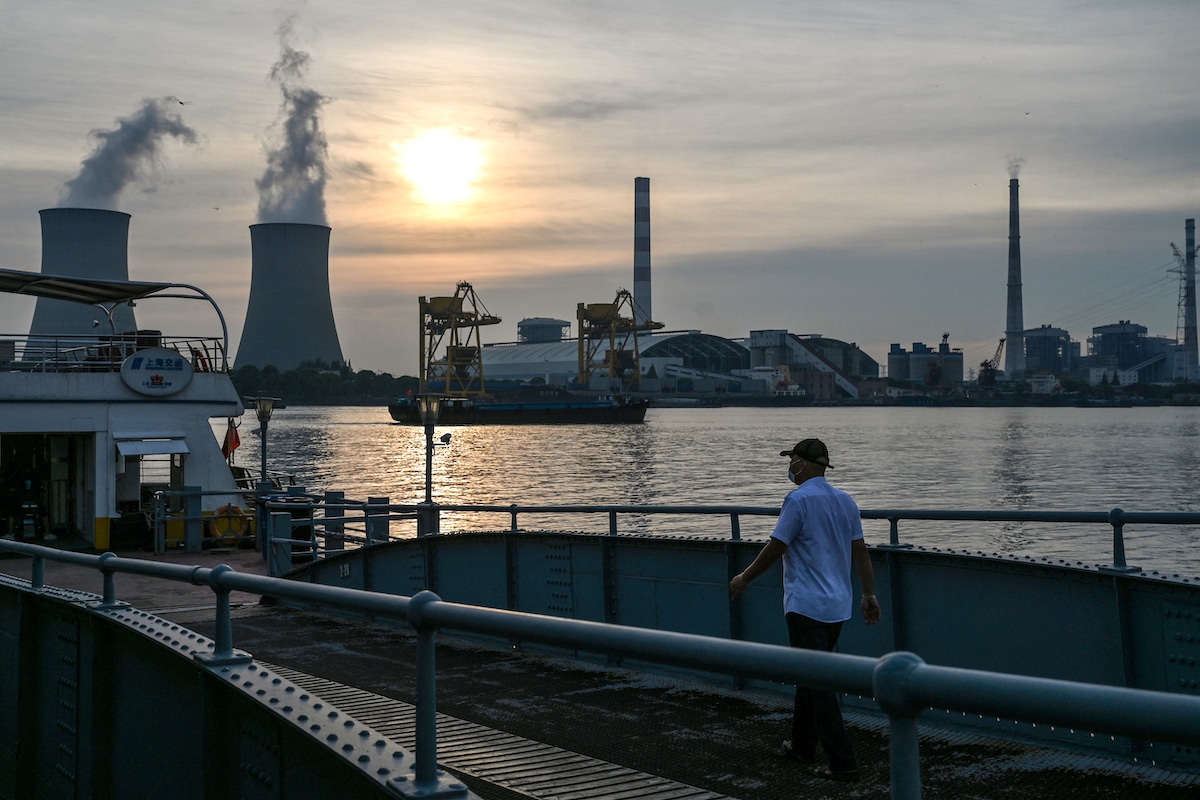Products You May Like
The Wujing coal-electricity power station across the Huangpu River in the Minhang district of Shanghai, China on Aug. 22, 2022. HECTOR RETAMAL / AFP via Getty Images
 Why you can trust us
Why you can trust us
Founded in 2005 as an Ohio-based environmental newspaper, EcoWatch is a digital platform dedicated to publishing quality, science-based content on environmental issues, causes, and solutions.
As operating coal power plants were retired last year and scheduled projects canceled, the number of plants decreased in developing and developed countries, except China, according to the ninth annual global survey of the coal plant pipeline by Global Energy Monitor, a press release from Global Energy Monitor said.
However, in order for the world to be on track to phase out coal by 2040 — as required by Paris agreement goals — the pace of retiring coal-fired plants must be four and a half times faster.
“At this rate, the transition away from existing and new coal isn’t happening fast enough to avoid climate chaos,” said lead author of the report Flora Champenois, who is the project manager for Global Energy Monitor’s Global Coal Plant Tracker, in the press release.
More From EcoWatch
According to the findings of the survey, the phaseout of coal plant capacity outside China was slower than in previous years, and China’s plans for new plants is enough to more than offset the capacity of plants retired last year in the European Union (EU) and U.S. combined.
“The more new coal projects come online, the steeper the cuts and commitments need to be in the future,” Champenois said.
The report found that the capacity of retired coal power was 26 gigawatts (GW) last year, with an additional 25 GW having been announced to cease by 2030. In developing countries other than China, the amount of scheduled coal-fired capacity fell by 23 GW, but China’s planned increase of 126 GW of capacity far outweighed those reductions.
All currently operating coal plants in the wealthiest countries in the world need to be retired by 2030, and by 2040 everywhere else in order to stay on track with the world’s climate goals.
In order to phase out operating coal power plants by 2040, an average of 117 GW of capacity must be retired each year, which is four and a half times the amount that was retired in 2022.
In Organisation for Economic Co-operation and Development (OECD) countries, an average of 60 GW needs to be retired to meet the 2030 goal, and 91 GW per year for non-OECD countries to meet their 2040 target.
Taking plants that are already being considered and under construction into account would mean even more drastic reductions.
Last year, 14 countries added 45.5 GW of newly commissioned coal power capacity, with 59 percent of that in China.
“The IPCC and the UN have both renewed the marching order to wind down coal power globally in what may be our last chance to avoid the worst of a warming planet’s harms,” Champenois said in the press release.
In 2021, the EU retired a record high 14.6 GW of coal capacity, but Russia’s invasion of Ukraine and the global energy crisis led to a slowdown in retirements, and in the past year just 2.2 GW was taken out of commission.
The U.S. was the leader in coal retirements last year, with 13.5 GW in retired coal capacity.
The overall increase in total coal generation in the EU ended up being one percent last year.
Planned coal capacity in India increased 2.6 GW last year, and the country also has 32 GW of coal power capacity under construction.
Overall, coal power capacity under development collapsed after reaching highs in 2014 and has been relatively steady since 2019.
“Progress in retiring coal power plants in rich countries and cancelling new coal power projects in developing countries, despite the gas crunch that shook global energy markets in 2022, is encouraging,” said Lauri Myllyvirta, the lead analyst for Centre for Research on Energy and Clean Air, in the press release. “Outside of China, the response to the energy crisis was dominated by investment in clean energy. However, that progress urgently needs to be accelerated. China pulled in the opposite direction, sharply increasing planned coal power capacity, showing the need to deploy clean solutions and better enforcement of existing policies that should restrict new coal power projects.”
Subscribe to get exclusive updates in our daily newsletter!
By signing up, you agree to the Terms of Use and Privacy Policy & to receive electronic communications from EcoWatch Media Group, which may include marketing promotions, advertisements and sponsored content.
